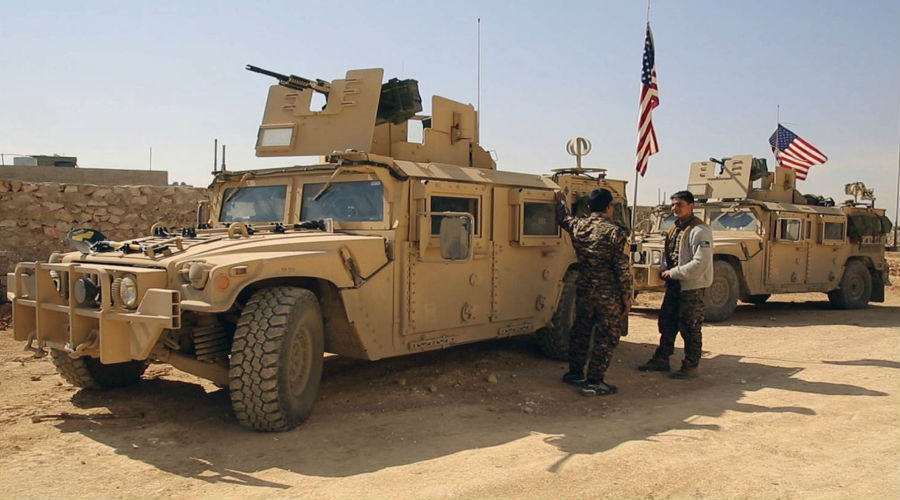Two years into its its military intervention in Syria, Russia recently announced that that it will end its military operations in the war-torn country and withdraw its field forces but will keep its military bases and logistical centers.
In late November, Vladimir Shamanov, chairman of the defense committee in Russia's lower house of parliament, stated that Russia’s two bases in Hmeymim and Tartous will continue to operate after the end of military operations and that Russia will upgrade their capabilities.This came amid controversy between Moscow and Washington over the justifications and legitimacy of maintaining military presence in Syria, which is also linked to the trajectories of the Syrian conflict and the relevant positions of involved regional and international parties.
Multiple Goals
On December 6, 2017, Russian President Vladimir Putin claimed that the military operation in Deir Ezzor was now finished after a complete victory had been achieved over ISIS. He noted that his announcement was based on a situation report he received from defense minister Sergey Shoygu confirming the total defeat of ISIS in that area, and that there still could be some of ISIS’ pockets of resistance in some areas.
The development came amid other developments on the ground after the conclusion of operations in both Deir Ezzor and Boukamal, while intermittent air strikes were officially announced by Moscow when it also announced that there was an ISIS pocket around Idlib. This indicates that Russia is likely to continue to play a role in providing air support to the regime of Bashar Assad to eliminate such pockets.
Russia appears to be seeking to achieve three primary goals. Firstly, it wants to maintain its major military bases in Hmeymim and Tartous as well as some logistical centers such as the Coordination Center for Reconciliation. The plan indicates that Russia is focused on maintaining a permanent presence in Syria that it can expand in the future based on a central framework.
Secondly, Russia wants to maintain its primary role in engineering the political process in Syria and remain a key party on the scene in the future. This was reflected by Putin’s call for moving to the political process along with the start of an eighth round of Geneva talks. Thirdly, Russia wants to push the United States to determine its own strategy. Despite its incessant criticism of the US military presence in Syria, it is keen on continuing coordination with the US about Syria. The countries recently renewed an agreement signed in late 2015 to prevent in-the-air incidents involving their jets engaged in operations in Syria.
Demarcating Areas of Influence
The identification of areas of influence in Syria govern the military and political goals of both Russia and the United States, as shown clearly by the deployment maps of forces of both countries. Russia maintains two major military bases in Syria. The first is a naval base in Tartous where 1700 troops are stationed along with two supply and maintenance ships. At its second base in Hmeymim, Russia stationed 2000 soldiers, 32 fixed-wing planes, 16 helicopters and two air-to-air missile systems.
Moreover, Russia deployed its military police personnel in all Syrian cities after an agreement to create four de-escalation zones was reached. But Russia is likely to reduce the size of its military force in Syria perhaps by 50 per cent. In April 2016, Russia announced that a draw-down of its forces is possible to cut costs. It is also likely to leave field operations to the forces of the Assad regime and allied Iran-aligned militias in any future confrontations.
However, local reports indicate that Russia has at least nine military bases, including the two in Hmeymim air base and Tartous naval base. The reports unveiled that Russia has two bases and not only one in Lattakia, in addition to seven smaller ones. But because it is perceived that they are not purely Russian but are jointly run with the Assad regime, the reduction of Russian presence is likely to be carried out at these seven bases.
Additionally, as part of the Russian drawdown, Russian military police is likely to be withdrawn from some areas and replaced by the regime forces as part of anticipated political shifts. Accordingly, it becomes more likely that forces from sponsor countries will be deployed to the agreed de-escalation zones.
Regarding the United States, local reports reveal that there are currently 16 American military bases in Syria. Assessments show that most of these bases are small size, jointly run with the Global Coalition and Britain and France in particular, and are close to the border with Turkey and mostly located in Kurdish-held areas or on the border with Iraq.
The United States has not taken a similar position on ending military operations as Russia, but has the view that ISIS still has presence in Syria. According to the Pentagon, the US military plans to stay in Syria “as long as necessary”, a position that ignores criticism from Russia, voiced frequently by Foreign Minister Sergei Lavrov, that American military presence in the country is illegal.
Based on the US and Russian sets of calculations for their military deployment, it can be said that the possibility of Russia fully withdrawing from Syria remains weak. Instead, Russia is likely to reduce the size and concentration of its military presence only as part of its strategic vision for Syria’s security and political future. This means Russian statements on withdrawal from Syria come only as a move that is associated with the transitional development of major military operations to the political process that Moscow is formulating. Such development may indicate that Syria is entering a new phase of influence-sharing between Russia and the United States. Accordingly, Russia is looking forward to consolidating its role in the political process in Syria while the United States is keen on maintaining a presence in the country.


